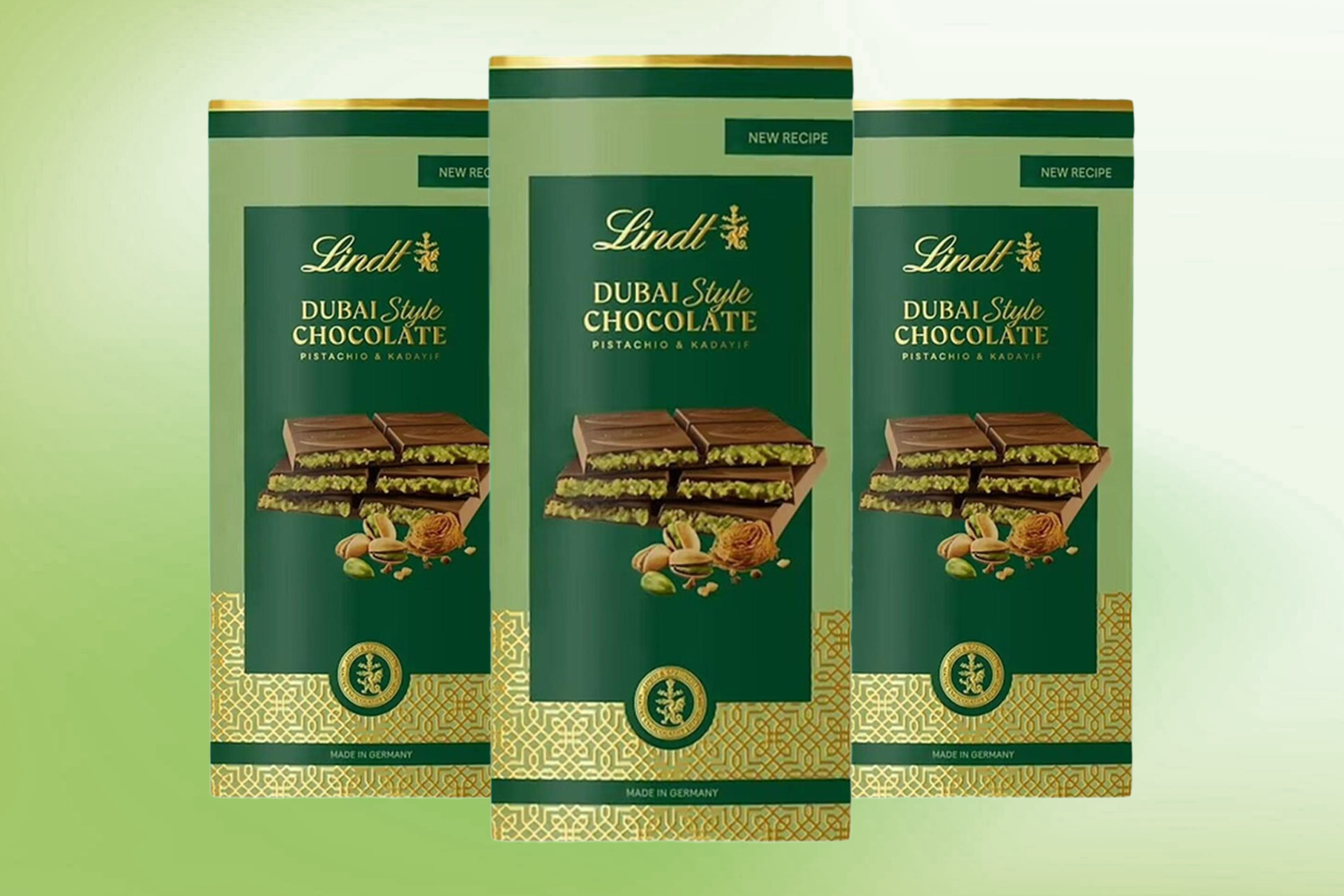
The gap between “new product becomes viral sensation” and “demand for viral sensation product becomes problematic” seems to be getting shorter and shorter. The latest culprit – Dubai chocolate – appeared to make the switch within weeks. One minute I was reading a profile piece about how this sizzlingly on-trend confectionary, comprised of a pistachio cream filling, crispy kataifi (shredded phyllo dough) and tahini swaddled in milk chocolate, had become a global success story. The next, I was wincing at the oh-so-predictable follow-up: “Dubai chocolate TikTok trend triggers international pistachio shortage”. It almost feels farcical at this point.
In reality, the trajectory from social media frenzy to real-world consequences was rooted further back in time. The original Dubai chocolate, made by FIX Dessert Chocolatier and named “Can’t Get Knafeh Of It” in a nod to the Middle Eastern dessert that inspired it, launched in 2021. The first post praising this high-end, £15-a-bar concoction appeared at the tail-end of 2023. Then, like a snowball gathering ever-increasing velocity and volume as it hurtles downhill, the sweet treat’s popularity swiftly spiralled out of control. More and more TikTok videos jumped on the bandwagon, sales rocketed, and copycat versions sprang up from the likes of Lindt, the sale of which had to be limited to two bars per person at Waitrose after multiple sell-outs.
Overnight, it went from being something most people had never heard of to the subject of round-ups listing the best Dubai chocolate-inspired products on the market in time for Easter 2025. Even Morrison’s brought out a pistachio cream Easter egg this year in honour of the trend.
Now, we’re faced with the inevitable dark side of all this hysteria. One chocolate bar’s success has resulted in a global pistachio shortage and a corresponding price hike for kernels. Grown mainly in the US and Iran, the nuts were already in shorter supply thanks to last year’s poor harvest in America; Dubai chocolate’s stratospheric rise to fame has only exacerbated the issue. “The pistachio world is basically tapped out at the moment,” Giles Hacking, from nut trader CG Hacking, told the Financial Times, adding that prices have shot up from $7.95 to $10.30 a pound in just a year. “There wasn’t much in supply, so when Dubai chocolate comes along, and [chocolatiers] are buying up all the kernels they get their hands on … that leaves the rest of the world short,” he said.
It’s not the only example that epitomises the notion of “this is why we can’t have nice things”. Another bougie consumable popularised by social media is currently caught amid its own bout of supply-demand turbulence: matcha.
Now, we’re faced with the inevitable dark side of all this hysteria; one chocolate bar’s success has resulted in a global pistachio shortage
There wasn’t much call for this powdered green tea outside of the traditional Japanese tea ceremony until a few years ago. Now, spurred on by Instagram and TikTok posts championing matcha-infused everything from lattes to shakes to ice cream in its distinctive shade of verdant green, production has nearly tripled to meet demand, going from 1,471 tons in 2010 to 4,176 tons in 2023. Still, it’s not enough. Matcha’s newfound fashionable status – partly triggered by glossy wellness influencers who seem to curate their food and drink consumption on aesthetics as much as health benefits – has resulted in a green tea shortage. Prices have surged, scarcity has frustrated customers, and the small Japanese town of Uji that specialises in matcha’s production, ill-equipped for this sudden Western clamouring, has been put under massive strain.
More than half of all matcha is exported, much of that to the Middle East. According to a recent report in The Times, unless things change it seems inevitable that the gap will be filled by cheaper, low-quality Chinese products instead, putting the OG Japanese matcha – steeped in 800 years of history – under threat.
Sticking with the green theme, online trends were having a direct impact IRL even a decade ago. In 2015, avocados became the go-to brunch item to snap and pop on your Instagram feed; the same year, they were crowned the “most-pinned” food item on Pinterest. Cue the ensuing global avocado shortage, which left Aussies paying $7 per fruit and prompted a crime wave of mass thefts in New Zealand.

In the face of such evidence, it’s hard to argue that our bougie taste in snacks isn’t destroying the planet. But let’s focus on the common denominator in all of this: as is the case for many of contemporary society’s worst afflictions, social media seems to be at the permanent centre of the Venn diagram. It’s no one individual’s fault – not the producer of the “hot new thing”, nor the person who posts about it, nor the consumer who sees a clip and fancies trying it as a treat. That’s how capitalism works: demand dictates supply, supply dictates price. But supply chains simply aren’t set up for the modern phenomenon of TikTok videos, nor for the overnight stardom that comes courtesy of an algorithmic quirk exposing millions of viewers to a certain product.
It's time to take heed of the real lesson behind all this. However good the latest food and drink craze looks on your feed, it’s masking the ugly truth beneath: virality and sustainability simply aren’t compatible.







